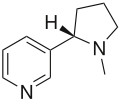We had learned in the class about Extensible Markup Language (XML). The definition of
XML is to transport and store data with focus on what data is. This XML
language is similar as HTML language. But, the XML is not a replacement for
HTML. The function of HTML is to display data with focus on how data looks. The
XML also can be described as a software and hardware independent tool for carrying
information.
Example of an XML Document
Input
<note>
<to>Ahmad</to>
<from>Abu</from>
<heading>Reminder</heading>
<body>Don't forget me this weekend!</body>
</note>
<to>Ahmad</to>
<from>Abu</from>
<heading>Reminder</heading>
<body>Don't forget me this weekend!</body>
</note>
Output
To: Ahmad
From: Abu
Reminder: Don’t forget me
this weekend
XML Syntax Rules:
|
Examples:
<p>This is a
paragraph</p>
<p>This is another
paragraph</p>
|
XML Tags are Case Sensitive |
Examples:
<message>This
is incorrect</message>
<message>This
is correct</message>
|
XML Elements Must be Properly Nested
|
Example:
<b><i>This text is bold and
italic</i></b>
|
Reference









![(2S,5R)-2-ethyl-1,6-dioxaspiro[4.4]nonane](http://upload.wikimedia.org/wikipedia/commons/thumb/8/8e/2S%2C5R-chalcogran-skeletal.svg/195px-2S%2C5R-chalcogran-skeletal.svg.png)





